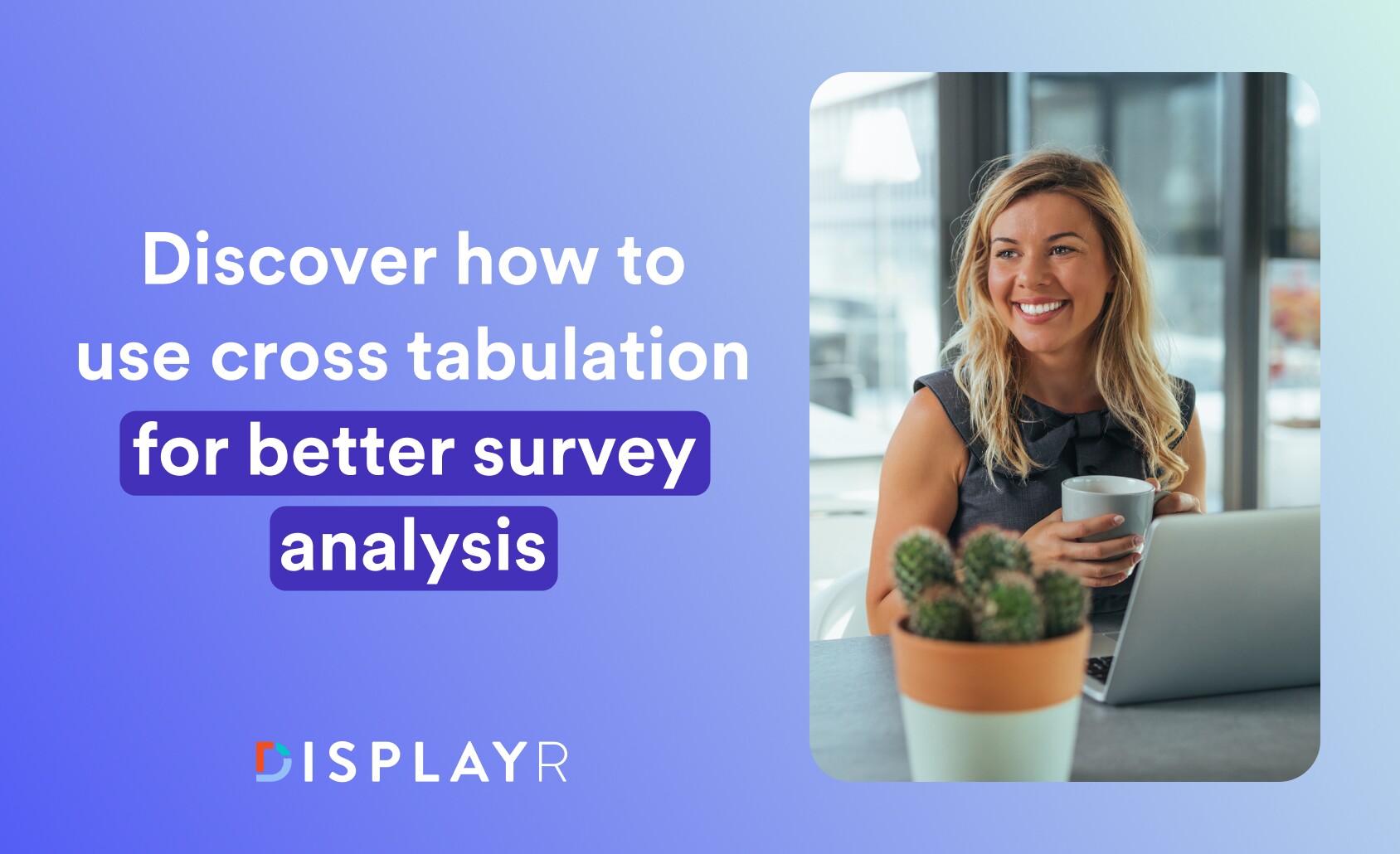Why Crosstabulation Equals Better Survey Analysis

For businesses looking to make the most out of their survey analysis, crosstabulation is a crucial time and money saving tool for both market growth, and growth within the workplace. When crosstabulation is not used to analyze survey data, it’s easy to either get bogged down in rabbit holes of individual responses or only look holistically at linear, survey-wide satisfaction.
Often in these cases, many of the patterns and correlations essential to make the most out of our data go unnoticed.
Crosstabulation (wherein charts are known as crosstabs, matrix reports and contingency tables) is an easy statistical method that organizes categorical data such as that from a survey. The matrix format of a crosstab is able to reveal critical relationships between different variables. Ultimately, helping you to save time and money.
Table of Contents
- Understanding Crosstabulation
- Benefits of Crosstabulation for Survey Analysis
- Common Applications of Crosstabulation in Survey Analysis
- An Easy Tool to Use for Crosstabulation
Understanding Crosstabulation
In any set of survey results, you’ll find both Independent Variables (typically demographic information) and Dependent Variables (survey responses or outcomes).
Simply put, a crosstab is a data table where the variables in its rows and columns intersect to create cells that display more specific results.
| Demographic Information | Survey Responses and Outcomes | ||||
| The Data You're Currently Missing from Your Surveys | |||||
This visualizes both the results from a large group of survey responders as well as that from specific subgroups. Therefore, eliminating any chance you’ll get bogged down in individual responses or confused by big picture numbers, and presenting you with actionable insights!
Here’s an example made with Displayr that allows us to easily visualize and interpret a dataset of yearly income in relation to age.
Consider how a business might effectively use the data from this survey to target more expensive lifestyle products to those age groups with more disposable income.
Now, imagine if this business hadn’t analysed this survey data with crosstabulation - they could’ve missed these key hidden insights essential to grow sales!
Benefits of Crosstabulation for Survey Analysis
As you just saw with our example, the power of crosstabulation lies in its ability to transform complex datasets into actionable insights. Let’s narrow these benefits down.
Data clarity
Rather than wrestling with raw data, you can use organized tables to visualize and hence quickly grasp relationships between variables. This visualization is especially useful for those without statistical expertise.
Granular Analysis
Crosstabs will enable you to deep dive into specific segments of your survey responses. For instance, Guzman y Gomez, might discover that while overall burrito quality ratings are positive, customers aged 18-25 consistently rate portion sizes lower than other age groups and therefore introduce a larger sized burrito.
Pattern Recognition
Through systematic organization of your data, crosstabulation will reveal patterns that might otherwise remain hidden. A small retail boutique might notice that customers who shop during weekday mornings tend to spend more per visit and report higher satisfaction levels.
Statistical Significance Becomes Easier to Identify
By comparing observed frequencies with expected frequencies, analysts can quickly determine whether relationships between variables occur by chance or represent genuine correlations.
Error Reduction
The structured nature of crosstabs helps prevent misinterpretation of data and ensures consistency in analysis across different team members or departments.
Common Applications of Crosstabulation in Survey Analysis
If you’re still unconvinced, take a look at the wide range of groups where crosstabulation is an incredibly valuable form of survey analysis!
- Market research teams frequently employ crosstabulation to gain deeper insights into consumer behavior. A clothing brand such as Zara might discover that while their new summer collection receives positive reviews overall, female millennial customers particularly appreciate the sustainable fabric choices, leading to targeted marketing campaigns.
- Healthcare organizations often leverage crosstabs to improve patient care and operational efficiency for example better understanding treatment effectiveness by analyzing recovery rates across different demographic group
- Educational institutions such as universities might use crosstabulation to improve academic outcomes. Such as by analyzing course satisfaction across different professors’s teaching methods and the correlation between study habits and academic achievement.
- Human resources departments regularly use crosstabs to enhance employee engagement and satisfaction. For instance, by considering the impact of management styles on team performance.
An Easy Tool to Use for Crosstabulation
Now that you’re intent on using crosstabulation to better your survey analysis, you need some way to perform it.
There are many crosstab software tools to choose between, and you’ll find the most success in interpreting your data if you pick one with the right balance between user-friendliness and advanced software for your skillset.
Displayr’s easy and intuitive software can automate your survey data into presentation-ready crosstabs in just minutes. Ultimately, lending a more efficient and effective path for your survey analysis.
